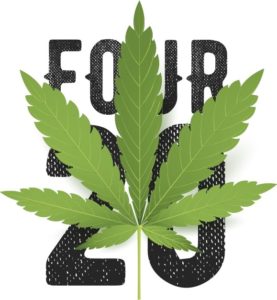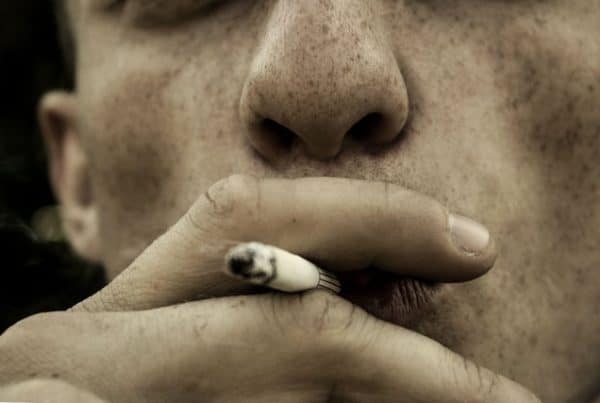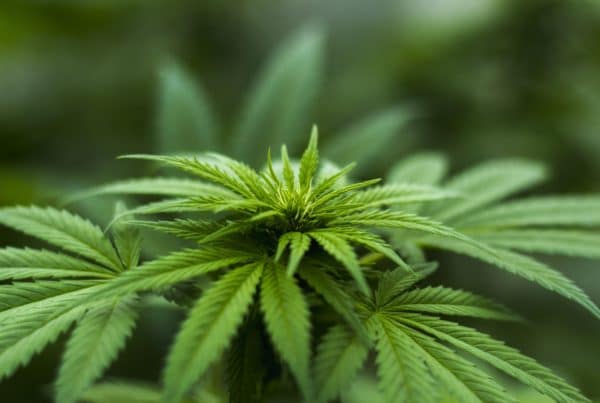What is 420 and Why is it So Important to Weed Culture?
You don’t even have to be familiar with weed culture to know 420. But where did this seemingly random number come from, and what does it mean?
Keyword(s): weed culture
April 20th is not just a day in mid-spring. 4/20 is a day to celebrate weed culture across the world in places where weed is legal, where it is decriminalized, and where it is still considered an illicit substance.
The World Health Organization reports that 2.5% of the world’s population uses marijuana, about 147 million people. That is definitely a lot of people celebrating 4/20. With more and more states and countries leaning towards marijuana legalization and allowing medical marijuana usage, it looks like weed culture is here to stay.
Weed culture hails 4/20 as “weed day,” with the time 4:20 on that day especially special. Not only that, but the number 420 has come to represent weed and weed culture in general.
But why? How did 420 come to be? And why is it so important to millions of marijuana users? Read on to find out what 420 means to cannabis users, and why it is important for weed culture.
The Origins of 420
Like any tradition or history of a culture, the origin and importance of 420 is often mysterious and debated within the community. There are many potential beginnings for how 420 came to be, each with their own story, proponents, and naysayers.
Let’s take a look at the most common origin stories of 420. We will also look at which seem true or false as the start of this sacred symbol of weed culture.
Birthday or Death-day Celebration
Some people say that April 20th is either Bob Marley or Jimi Hendrix’s birthday or death-day, which is why that day is now celebrated with weed: to honor them and weed culture. Both Bob Marley and Jimi Hendrix were known advocates of cannabis; they are basically stoner icons.
So it would make sense that their birthdays would be a great time to honor both them and marijuana simultaneously. This is a great theory, except for the fact that April 20th is neither Bob Marley or Jimi Hendrix’s birthday or death-day.
Police Code
Another rumor of the origin of 420 has to do with its illegality. The rumor states that the California police radio code for a marijuana report of smoking or use is “420.”
After some quick research, it is easy to find that the code 420 on police radio actually doesn’t mean anything. Some people say it actually means “obstructing entry on public land” or “homicide” according to the penal code. It seems that this theory has been thoroughly debunked.
The Waldos
As we said, the previous two theories of 420 have been proven to be incorrect, yet are still heard throughout the marijuana community and even outside of weed culture as well. However, the true story of 420 starts with some high school students in San Rafael, California.
Back in the 1970s, there was a group of 5 teenage guys who, you guessed it, liked to smoke. These guys nicknamed themselves “The Waldos” because they liked to hang out next to a particular wall in the back of their high school.
These guys just sound like normal teenagers right? Well, they were. But these normal teenagers would end up coining the term 420, which would go on to be the biggest unofficial holiday of weed culture in the world.
How it Started: the Waldos’ Code
These guys heard that there was a secret, hidden patch of pot growing somewhere near the Point Reyes Peninsula Coast Guard Station. So what did these teenage high schoolers do in the early 70s? They went to try and find the free weed, of course.
Then they decided to meet up at 4:20 near a statue of Louis Pasteur that was near their school. They would whisper to each other, “4:20 Louis” to indicate that they were going to meet up and find the good kush hidden near the Coast Guard Station.
Eventually, their code was shortened to just “420” instead of “4:20 Louis”. They started to use it for anything and everything weed related, not just for meeting up at the statue to go on a search for the hidden weed.
If they wanted to smoke a joint after school or ask each other if they had any weed, all they had to do was say 420 to the other Waldos in passing and they would know to meet up. It allowed them to talk about smoking without teachers, parents, police, or eavesdroppers knowing.
The Proof
Where’s the proof that 420 really started with these high schoolers? They’ve actually been interviewed before and have evidence to back up their story. They have old flags, letters, and other ‘evidence’ from the early 70s when they say all this took place. Which was before 420 was being used by people all over the world.
This evidence has even been inspected and verified by journalists, according to the Huffington Post, including the New York Times, The Los Angeles Times, and the San Francisco Chronicle. Seems like the Waldos are the true beginning of the weed culture 420 phenomenon.
 How 420 Became a Part of Weed Culture
How 420 Became a Part of Weed Culture
It’s one thing to have come up with the term 420, which is basically proved to be the Waldos’ doing. But there’s no way that these high school students alone could have popularized the phrase and spread it throughout the country and eventually the world.
The Grateful Dead
And that’s where The Grateful Dead comes in. For those who are unaware, The Grateful Dead were a band formed in 1965 that were well known for their devoted, hippie fan base, the Deadheads, as well as their strong association with weed culture.
There are several stories that detail how The Grateful Dead helped popularize 420 as the universal symbol for weed.
In the most prominent and accepted story, it is said that after the fall of the hippie mecca in San Francisco called the Haight, the band moved into the area around where the Waldos’ high school was located.
There, they would practice and play some shows. It is said that the Waldos would hang out around these practices and were friends with some of the band members. They would talk to the band, go to parties where they were, hang out with them, and even smoke with them.
It was during these hangouts that The Grateful Dead probably heard the Waldos using 420 as a term for weed, and it stuck with them. The band started using the term 420, and it seems like that’s what got 420 on the map.
High Times Magazine
The story doesn’t stop there, though, and The Grateful Dead’s role isn’t over yet.
Before a Dead concert in the early nineties, a reporter for High Times Magazine named Steven Bloom was in the pre-concert crowd. He said that a Deadhead gave him a flyer detailing a meet-up at 4:20 on 4/20 for 420-ing. The flyer even detailed the supposed origin of the term as the police radio code (which we now know is incorrect).
Bloom hadn’t heard of this term before and he was intrigued. He told the magazine about it, and the magazine started using 420 in its publications. This is what is really thought to have taken 420 from a local, hippie, Deadhead term to a global, cultural phenomenon.
High Times even interviewed the Waldos in 1997, examining evidence confirming their story as the originators of the term 420.
Other Claims
The Bebes
However, recently a group called the Bebes has claimed that it was really them who invented 420, and not the Waldos. But there isn’t much evidence for this, and most people reject them as the inventors, standing fully behind the Waldos story.
In fact, 420 magazine, the site that published this initial new rumor, says that everything the Bebes claim is hearsay. They don’t have any physical evidence either.
There are often these types of claims from other groups. Saying it was actually their initial idea or that they started using 420 before the Waldos. But none of them have the evidence the Waldos have. It seems like other claims are based more in myth than in fact.
420 Chemicals
Another popular claim is that 420 is the number of chemicals that you find in marijuana. It has been shown that over 400 chemicals have been identified in marijuana, but nowhere does it say 420 specifically.
Bob Dylan?
It also seems as though music plays a large role in the 420 origin stories. Besides Bob Marley, Jimi Hendrix, and The Grateful Dead, another musician was roped into the 420 story in Bob Dylan.
Specifically, this new argument focuses on his song ‘Rainy Day Woman #12 and #35’ where there is a line “Everybody must get stoned!” That along with the fact that 12 times 35 equals 420 has created another theory behind 420.
This idea is slightly tarnished by the fact that Dylan himself insisted in 1966 that it wasn’t a drug song at all. He said that it is actually a biblical reference.
Tea Time
One last, strange theory says that 420 came to be because 4:20 is apparently tea time somewhere (either in Holland or Amsterdam, depending on who you ask).
We could go on and on with probably hundreds of other claims about the origin of 420. But we will leave it here with the assertion that the Waldos’ story seems to be the truth.
Why 420 is Important for Weed Culture
So now we know about the Waldos, The Grateful Dead, and all of the other crazy 420 theories. But why has 420 become so important in weed culture? How has it become such a huge, international symbol?
Counterculture
One of the main draws to 420 is less about weed itself and more about representing the counterculture. Celebrating 4/20 and using 420 as a recognized term has come to represent people going against the norm fighting for liberalization and freedom.
This isn’t surprising considering the hippie and Deadhead origins of the phrase.
Celebrating 4/20 and using the terminology is often said to be a protest against the current restriction and criminalization of weed in many parts of the world. 420 serves as a symbol for the minds of the counterculture. These are minds and people who are fighting against “the man,” just like in the hippie heyday of the 60s and 70s.
This counterculture and protest-oriented community has helped to shed light on the medical benefits of marijuana. It has actually pushed legalizations in many countries as well as states in the U.S. It’s also shown the lack of justice with marijuana convictions being primarily against people of color.
The ability to rally around a single phenomenon, that being 420, has brought people together to fight for legalization, fairness, and freedom of the very thing 420 represents. 420 has become a symbol for the culture marijuana has created, making it an important symbol to all those within it.
Community
This could be inferred by what we talked about above. But the other thing that 420 has come to represent is weed culture as a community. 420 isn’t just about smoking with your friends anymore; it has become a way to connect with other people who think the same way and do similar things.
“420” brings hundreds of thousands of people together on April 20th all over the world. It allows you to find roommates and friends who are “420 friendly” meaning that they’re OK with pot and smoking. It brings people together to protest injustice.
The community has embraced 420 as a symbol of themselves and what they stand for.
The importance of the 420 phenomena can be found within the basis of the community itself: freedom, hippie culture, counterculture, the enjoyment of pot, and fighting against oppression. 420 has come to represent all of that, making it an important symbol for the community.
Bottom Line
Weed culture, as you have seen here, has an interesting and robust history. The Waldos didn’t know it at the time, but their little high school code would eventually become an international symbol of weed, counterculture, and weed culture overall.
Whether you’re here for the community, the counterculture, the medical benefits, or just for fun, we hope that this background of 420 has shed some light on the culture.
If you have another 420 origin story you’d like to share, feel free to leave a comment down below! If you have any questions about marijuana, medical or otherwise, please don’t hesitate to contact us.
https://quantum9.net/puff-puff-pass-weed-etiquette-for-the-smoke-circle/
https://quantum9.net/fake-pee-and-you-will-you-pass-the-test/
https://quantum9.net/how-long-does-weed-stay-in-your-system/
https://quantum9.net/what-is-the-difference-between-indica-and-sativa/









I would hear it was Hitlers Birthday on 4/20, & The time in Amsterdam Tea-time as well. I have only heard the term “Where’s Waldo” Lol I guess whoever made up that game was high! ??